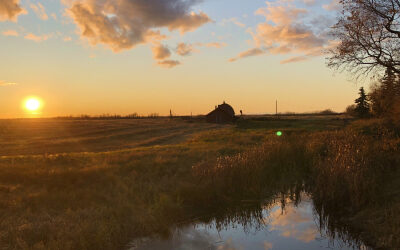The ALUS Big Lakes program is a partnership between ALUS and Big Lakes County, a mix of forests, hills, lakes and farmland covering a total area of nearly three million acres. Launched in 2019–20, the ALUS Big Lakes program is located in beautiful west-central Alberta. Primary agricultural products in the county are cattle and grain and oil crops, plus poultry, buffalo and vegetable production.
The County is home to a population of approximately 5,600 people, living in five hamlets and bordering three Métis Settlements and five First Nation communities.
True to its name, Big Lakes County encompasses a number of large waterbodies and their tributaries, including Lesser Slave Lake, Snipe Lake, and Winagami Lake, which drain into three different watersheds: the Athabasca the Mighty Peace and the Lesser Slave.
Not surprisingly, the area is known for its wilderness and outdoor activities, and is home to Provincial Parks, including the Winagami Wildland, Hilliard’s Bay, and Lesser Slave Lake Wildland PPs, as well as important wildlife habitat for fish, waterfowl, moose and grizzlies.
Amidst all this beauty, the ALUS Big Lakes program coordinator works with local farmers and ranchers to help establish ALUS projects that work to address several important environmental issues.
ALUS enhances wetlands and riparian buffer areas, plants trees to boost wildlife, establishes new pollinator habitats, and improves water quality, while also assisting with flood and drought resilience.
ALUS Big Lakes participants receive annual, per-acre payments for the creation of ecosystem services and the management and maintenance of ALUS projects on their land. These projects produce cleaner water, cleaner air and greater biodiversity, including pollinator habitat, for the benefit of everyone in surrounding communities.
For more information, contact the ALUS Big Lakes Program Coordinator.



